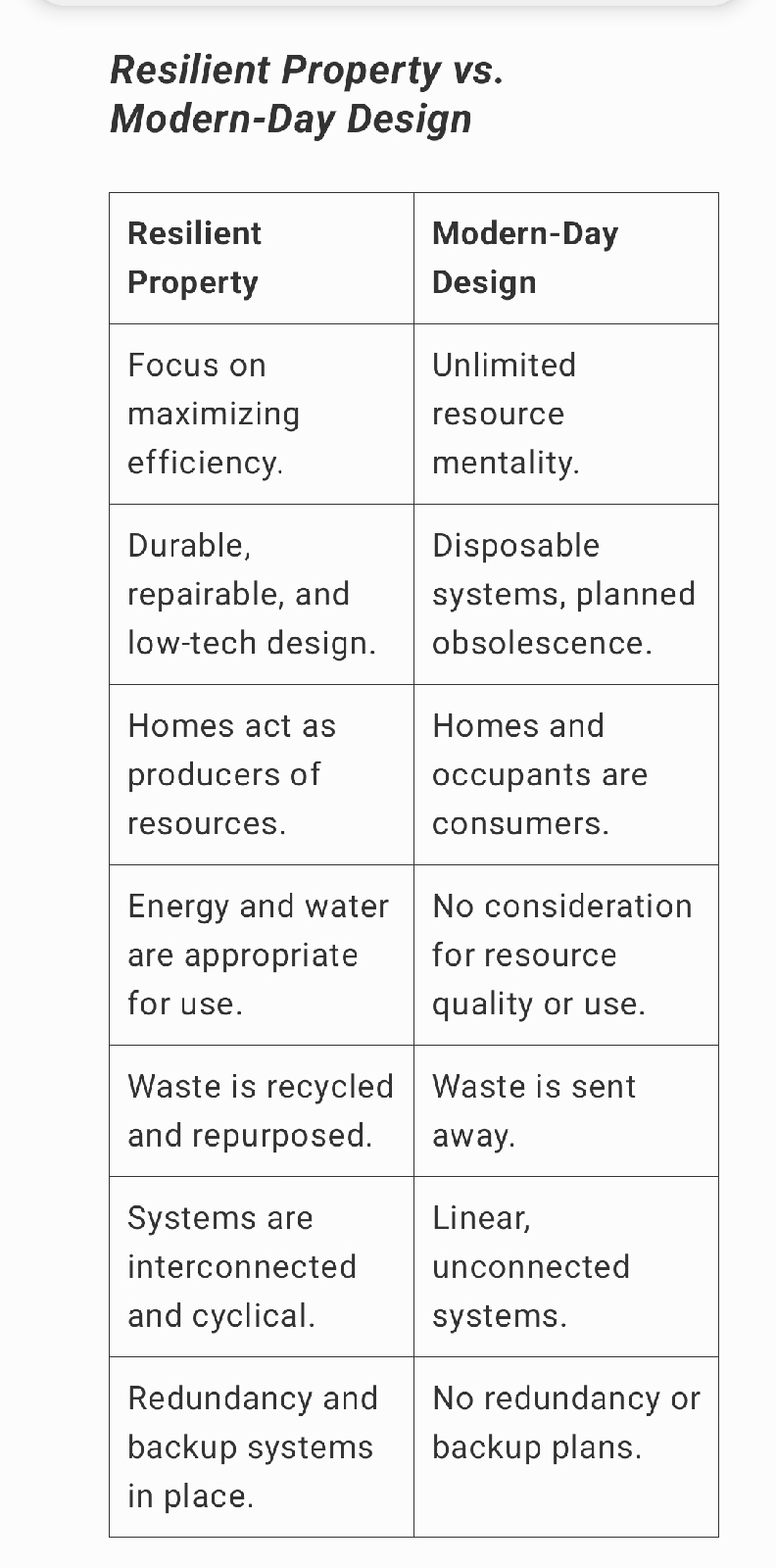At A Green Future Calgary, we believe in designing properties that maximize sustainability and efficiency, especially in challenging climates like Calgary's. A resilient property is not just about enduring the elements but thriving while minimizing reliance on external resources. The property illustrated in Figure 11 is a prime example of this. Let’s explore the principles behind a resilient property and how they differ from conventional modern-day designs.
---
What Makes a Property Resilient?
Resilient properties prioritize resource efficiency, ecological balance, and self-reliance. Think of how inappropriate it is to cut butter with a chainsaw—that same principle applies to matching resource density to end-use. For instance, heating your home with natural gas or using potable water to flush toilets are inefficient matches of energy or water quality. A resilient design aligns the quality of energy and water with specific uses.
Core Characteristics of a Resilient Property:
1. Efficiency:
High-quality, durable designs prioritize long-term use and low environmental impact.
Energy and water use are optimized to avoid wastage.
Fixtures, appliances, and insulation are designed to minimize consumption.
2. Productiveness:
Homes and occupants become producers of resources like energy, water, and food rather than being mere consumers.
Gardens and greenhouses contribute to food production, while solar panels and rainwater harvesting systems generate renewable energy and water supply.
3. Appropriateness:
Resources are matched to their end-use. For instance:
Greywater for toilet flushing and irrigation.
Passive solar heating for space warmth.
High-quality drinking water filters at kitchen taps.
4. Interconnectedness:
Systems are integrated to work together effectively. For example:
Heat-recovery ventilators recycle warm air.
Greywater is used to sustain greenhouse plants and landscaping.
5. Redundancy:
Backup systems are built for critical needs such as water, food, and heat to ensure resilience during resource shortages.
Storage solutions ensure long-term sustainability.
Resilient Property vs. Modern-Day Design
---
Water and Energy Systems in Resilient Homes
1. Water Systems:
Efficient: Low-flow fixtures and rainwater management prevent unnecessary waste.
Productive: Rainwater supports landscaping, and greywater is reused.
Interconnected: Nutrients from wastewater feed greenhouse plants.
Redundant: Water storage and backup plans account for drought conditions.
2. Energy Systems:
Efficient: High-performance insulation and energy-efficient lighting minimize power needs.
Productive: Solar panels, passive solar heating, and greenhouses generate power and heat.
Appropriate: Biomass for backup heat, gravity-fed irrigation, and solar photovoltaics for electricity.
Interconnected: Systems like heat recovery circulate energy efficiently throughout the home.
---
Why Choose Resilient Design in Calgary?
Cold climates like Calgary's demand homes that endure extreme temperatures while conserving resources. By integrating resilient design principles into your home, you can:
Lower energy and water bills.
Reduce dependence on external inputs like fossil fuels and municipal water.
Promote ecological balance by recycling waste and utilizing renewable energy.
Prepare for future uncertainties, such as climate change or resource shortages.
At A Green Future Calgary, we specialize in building resilient systems for water, energy, and food. Whether you're looking to incorporate rainwater harvesting, passive solar heating, or integrated waste recycling, we can help create a home that thrives sustainably in Calgary's climate.
---
Let’s Build a Resilient Future
Are you ready to transition from a consumer-driven design to a sustainable, resilient property? Contact A Green Future Calgary today to learn how we can help you create a home that is efficient, productive, and prepared for the future.
---
At A Green Future Calgary, we turn sustainable ideas into reality, one resilient property at a time.

